Last Updated on July 9, 2025 by teamobn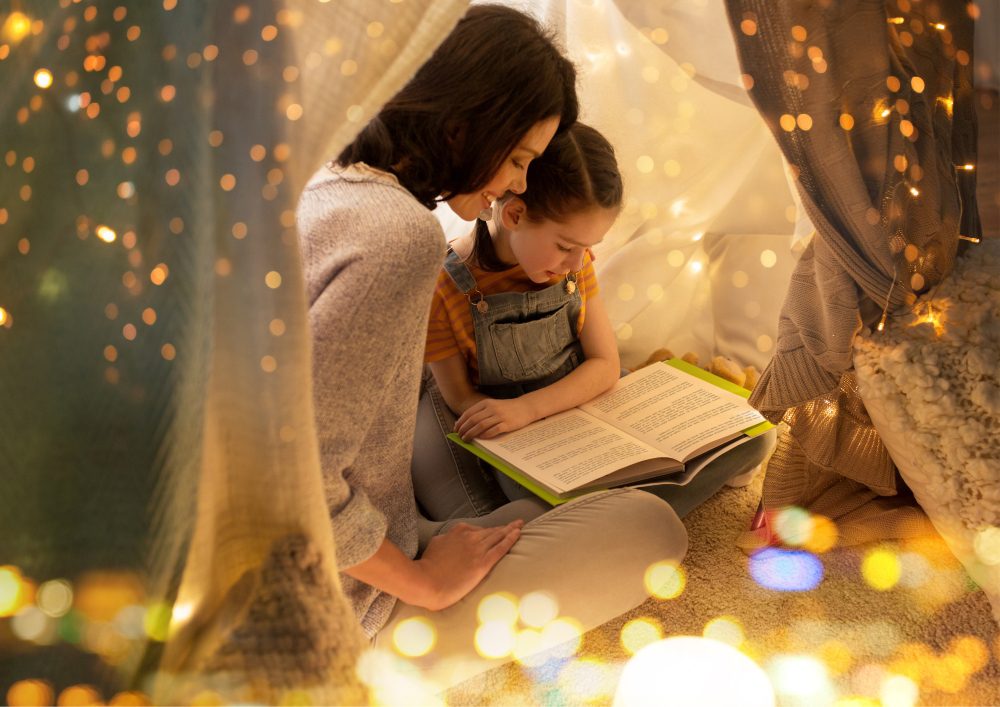
Creating engaging play spaces for kids doesn’t have to break the bank. You can transform any corner of your home with some imagination and DIY skills. These special spots will keep your children entertained and fuel their creativity.
In this guide, we’ll walk you through designing, building, and decorating perfect play areas for your little ones.
Contents
Types of DIY Play Spaces
Deciding what type of DIY play space to create is a fun and important step. Different types cater to different interests and ages. Whether your child loves reading, drawing, or acting, there’s a perfect play space for them. Here are some ideas to get you started.
Reading Nook
A reading nook is a cozy, quiet corner designed for book lovers. It’s the perfect spot for your child to explore new worlds through reading. A well-placed shelf or bookcase is essential to keep your child’s favourite books within reach in your DIY play spaces.
Comfort is key in your DIY play spaces, so a plush chair, bean bag, or hammock can make the space inviting. Don’t forget the lighting; a reading lamp or a string of fairy lights can create the right ambience.
Natural light during the day is a bonus if the DIY play spaces are near a window. Throw in some soft pillows and warm blankets for extra coziness. A small table beside the chair is a nice touch, giving your child a place to put a cup of cocoa or their current read.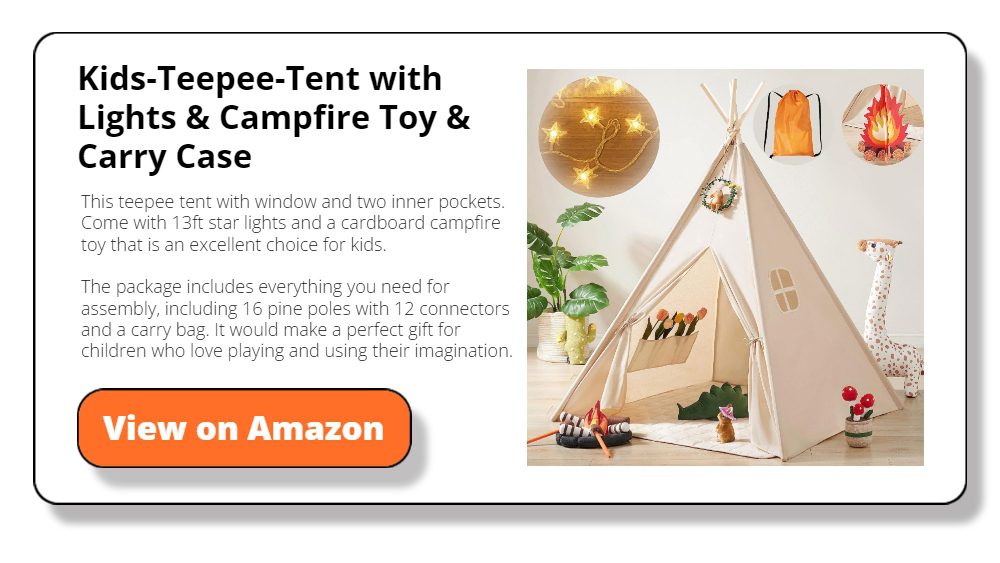
Craft Corner
If your child loves to draw, paint, or create a craft, the DIY play spaces can be their haven for artistic expression. A sturdy table is the main structure you’ll need here. It should be large enough to spread out all the art supplies but not so big it takes over the room.
Storage is crucial for keeping everything organized in your DIY play spaces. Consider a set of drawers or a pegboard with hanging cups to sort markers, crayons, and paint. Non-toxic, washable materials are a must, especially for younger kids.
Comfortable seating, like ergonomic chairs or cushions, can make long craft sessions enjoyable. Finally, a splash mat or an easy-to-clean rug can catch spills or messes.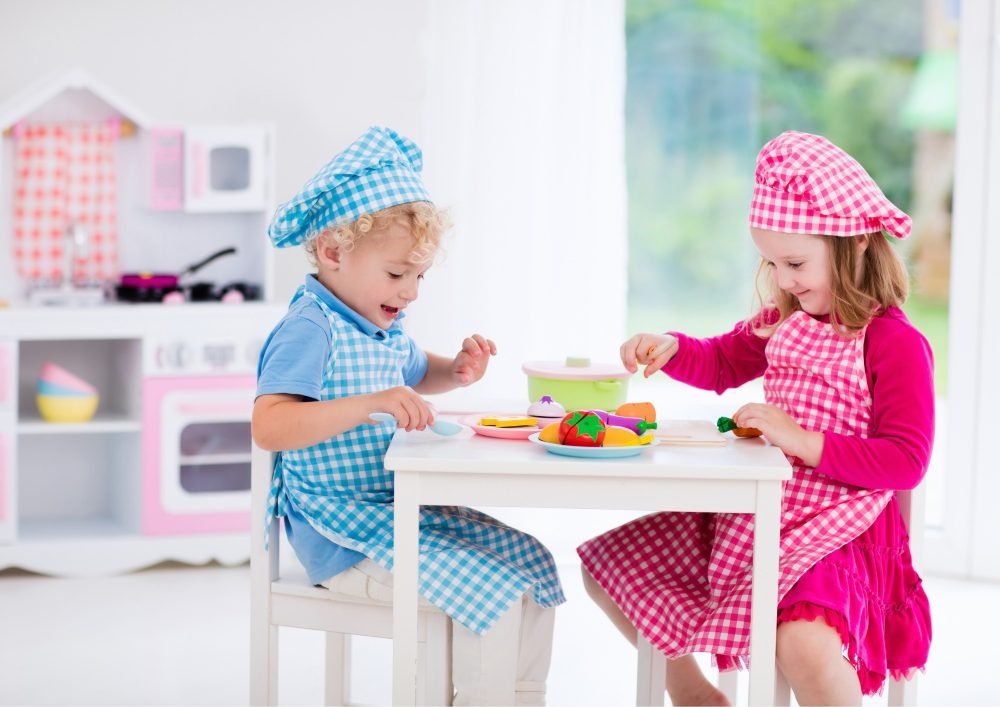
Mini Stage
For the little performers in your life, a mini stage type of DIY play spaces can make their acting dreams come true. A raised platform serves as the stage. It doesn’t have to be high enough to separate the “stage” from the “audience.”
Curtains add a theatrical touch to your DIY play spaces and can be easily hung from a curtain rod or simple wooden frame. Props like hats, costumes, and a toy microphone can make performances even more exciting. Don’t forget about lighting. A clip-on spotlight or a small string of stage lights can make a big difference.
A backdrop can also add depth to the setting. It could be as simple as a painted canvas or as intricate as a changing digital screen.
Outdoor Adventure Zone
An outdoor adventure zone for your DIY play spaces is a wonderful way for kids to explore nature and burn off some energy. The key structures can vary depending on your outdoor space. A swing set or a slide can serve as the main attraction.
If you have the room and resources, a treehouse can take the adventure of your DIY play spaces to another level. Sandboxes are great for younger children, offering hours of imaginative play. Safety is paramount, so ensure the area is fenced to keep children secure. Soft landing spots like grass or rubber mats can help prevent injuries.
Lastly, think about storage for outdoor toys in your DIY play spaces. A small shed or weather-proof bins can help keep things organized and protected from the elements.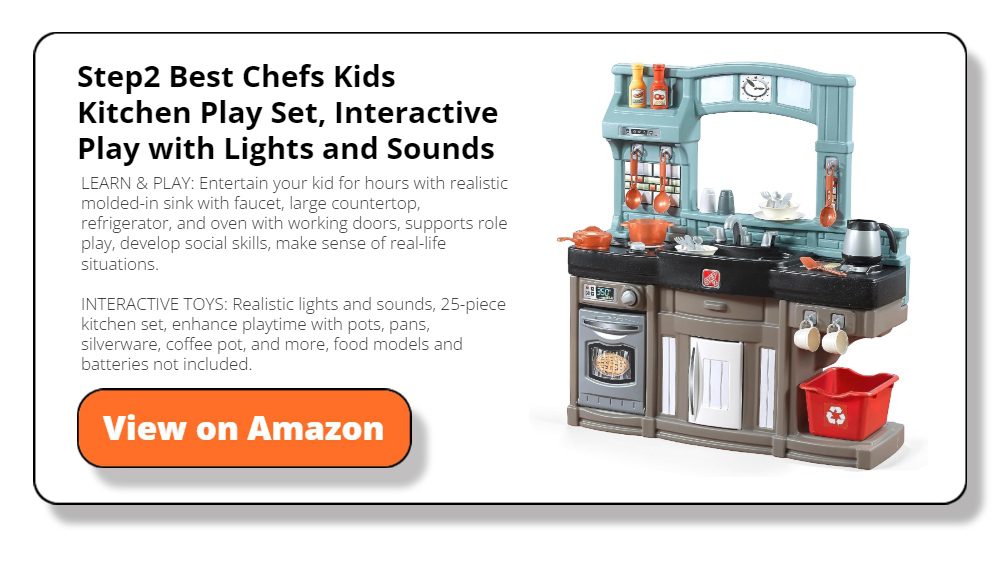
Science Lab
Science lab DIY play spaces can spark curiosity and a love for learning. The main item is a sturdy table that’s easy to clean. This is where all the experiments will happen.
Lab tools like test tubes, beakers, and magnifying glasses are must-haves. Store them in transparent containers or on open shelves. This way, everything is easy to find in this kind of DIY play spaces.
Safety gear is also important to your lab DIY play spaces. Think about adding goggles and non-toxic lab solutions for experiments. Don’t forget a small sink or a bowl of water for quick cleanups.
Add labels and charts on the walls to make it more like a real lab. This will help your child feel like a true scientist.
Music Studio
Music studio DIY play spaces can help your child explore the world of sound and rhythm. Key pieces include musical instruments. It could be as simple as a keyboard and a tambourine or as advanced as a small drum set.
Storage like shelves or cubbies can help keep instruments organized in your DIY play spaces. Soft flooring, like rugs, can help with soundproofing.
If possible, soundproofing materials on walls can keep the noise level down. A small recording device or microphone can add an extra layer of fun.
This allows your child to listen to their performances. With these elements, your child can enjoy endless hours of musical fun.
Game Room
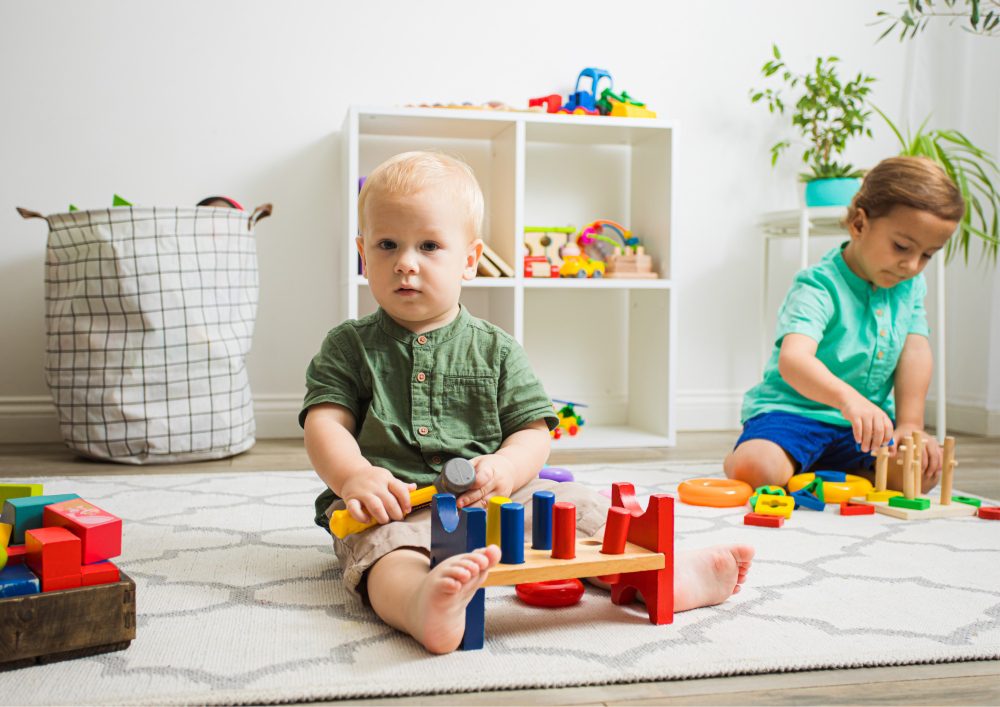
Game room DIY play spaces are all about fun and interactive play. Start with a comfortable seating area. It could be bean bags or a soft rug for sitting.
A low table in the center of your DIY play spaces is useful for board games or puzzles. Storage is crucial here, too. Shelves or bins can hold different types of games.
Add specialized areas like a mini ping-pong table or a dartboard if your DIY play spaces allow. For a high-tech touch, consider adding a small TV for video games.
Keep all cables and plugs organized and out of the way in your DIY play spaces. This will keep the space safe and clutter-free.
Pretend Kitchen
A pretend kitchen lets kids imitate adult tasks in a fun and safe way. Start with a mini kitchen set with a stove, sink, and oven.
Add some plastic fruits and vegetables to your DIY play spaces as well as toy pots and pans. Shelves or a pantry can store these items neatly.
Add small kitchen gadgets like a toy blender or coffee maker for a more authentic kitchen DIY play spaces feel. Cloth, paper towels, and pretend cleaning supplies can make it feel even more real.
A small dining table with chairs can complete the setup. This will let your child host pretend meals for their stuffed animals or friends.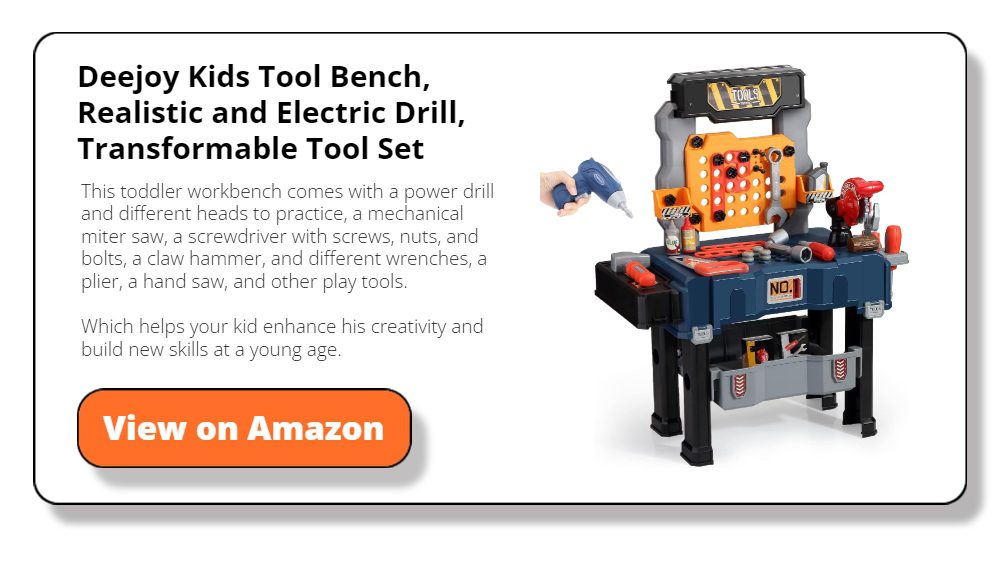
Planning the Space
Some planning is needed before you dive into creating your child’s dream play space. From measuring the area to choosing a theme, these steps help you turn your vision into reality. This section will guide you through the important play space planning stages.
Consult Your Child
The best DIY play spaces are ones that kids love. So, why not ask your child for their input? Sit down with them and talk about what they want. Maybe they’re dreaming of a pirate ship or a princess castle. Their ideas can guide your theme and shopping list.
Let them pick some colors or decorations for their DIY play spaces. This gives them a sense of ownership over the space. Just balance their wishes with practicality and safety. Including your child in the planning makes the space truly special for them.
Measure Your Area
Knowing the size of your play space is key to picking the right furniture and layout. Use a tape measure to get accurate dimensions of the room’s length, width, and height. Note down any irregularities like pillars or sloping ceilings.
Don’t forget to measure doorways and windows of your DIY play spaces, too. This helps when you’re buying bigger items like furniture. Knowing these dimensions ensures you won’t buy something too large or small. Measuring your area is the first step in making your play space plans a reality.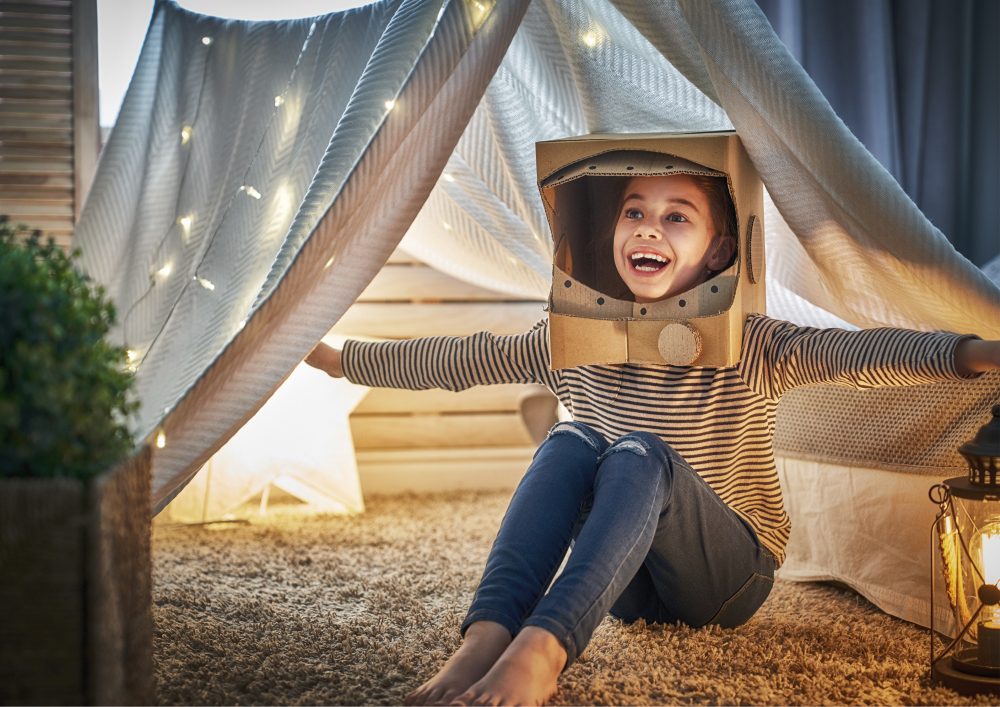
Create a Layout
Once you have measurements of your DIY play spaces and a list of essentials, it’s time to create a layout. You can sketch this on paper or use a digital tool. Place larger furniture pieces first, like tables or storage units. Make sure there’s enough space for your child to move around freely.
Think about the flow of the room. Is there a logical path from one activity area to the next? Also, keep safety in mind. For example, place craft supplies near the craft table, not beside the reading nook. A well-thought-out layout makes the play space functional and enjoyable.
Safety First
Creating DIY play spaces is exciting, but safety should always be the top priority. Making sure your child can explore without any risks is crucial. This section will cover key safety considerations you should not overlook when building your play space.
Choosing Safe Materials
When building your DIY play spaces, the materials you choose are very important. Opt for items that are non-toxic and free from harmful chemicals.
For instance, pick a paint that’s labelled as child-safe or low-VOC. If you’re buying furniture, look for pieces that don’t have sharp corners.
Soft, safe plastics or solid wood are good choices. Always read labels to ensure they meet safety standards.
Also, double-check that any fabric you use, like curtains or cushions, is flame-resistant. Choosing safe materials helps keep your child protected as they explore and play.
Safe Flooring Options
Flooring is a big part of your play space and must be safe. Soft options like foam mats or thick rugs can help. They provide cushioning in case of falls. Make sure any rugs have non-slip backings to avoid accidents.
If you prefer harder flooring, consider materials like cork or bamboo. They are softer than hardwood but still durable.
Keep in mind how easy the flooring is to clean. Spills and messes are bound to happen, so choose a material that can be cleaned easily and doesn’t harbour bacteria.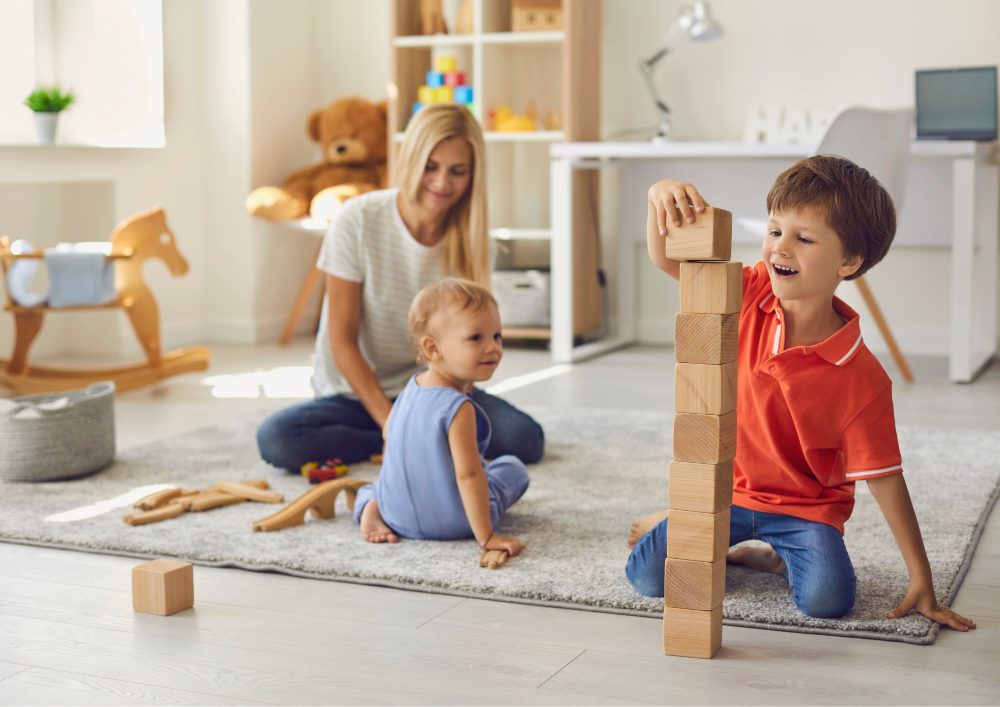
Removing Hazards
Before letting your child play, make sure the area is free from hazards. Sharp objects like scissors should be kept out of reach. Electrical cords must be tucked away or covered. If there are stairs or raised areas, think about installing safety gates.
Make sure there are no sharp rocks or dangerous plants in outdoor spaces. Always double-check the area for small items that could be choking hazards.
Frequent inspections can help you spot anything that might have been missed. These checks ensure your child can play safely without any worries.
Safe Storage Solutions
Keeping toys and supplies organized is important, but it should also be safe. Use storage units that are low to the ground. Their location makes it easy for your child to reach toys without climbing. If you choose taller units, anchor them to the wall to prevent tipping.
Drawers should have stops to avoid pinching little fingers. Use containers with rounded edges and avoid glass or sharp metal.
Safety latches can prevent children from opening things they shouldn’t. You can also use child-proof latches. These have adhesive sides for easy installation and are strong enough to prevent children from opening utility drawers within the room.
Emergency Preparations
Accidents can happen, even in the safest spaces. That’s why it’s good to be prepared. Keep a first aid kit in or near the play space. It should have band-aids, antiseptic wipes, and child-safe pain relievers.
Make sure you know basic first aid procedures for children. Keep emergency phone numbers handy, and make sure your phone is always charged when supervising play. Quick action can make all the difference in an emergency, so it’s best to be prepared.
Regular Checks and Maintenance
Maintaining your play space is crucial for ongoing safety once your play space is set up. Check for wear and tear regularly. Inspect furniture for any loose screws or frayed edges that could be a hazard.
Outdoor playsets need checks for rusty parts or chipped paint. Clean the space frequently to avoid the buildup of dirt or bacteria. Replace or repair any damaged items as soon as you notice them. Regular checks help you catch issues early and keep the play space safe.
Budget-Friendly Ideas
Creating a magical play space doesn’t have to be expensive. You can build a wonderful area on a budget with some creativity and planning. In this section, we’ll explore some cost-saving ideas to help you get the most bang for your buck.
Upcycle Old Items
You might have old furniture or materials that can be given new life. An old bookshelf can be painted and turned into a toy storage unit. Old pillows can get new covers and become cozy seating. Even cardboard boxes can become pretend cars or houses with some creativity.
You can refurbish old items to fit your theme if you have basic DIY skills. It’s not just budget-friendly; it’s also a great way to add a personal touch. Upcycling can turn what you already have into something new and exciting for your play space.
Shop Smart
You don’t have to splurge to get quality items for your play space. Look for sales and discounts at your favourite stores. Sometimes, end-of-season sales offer great bargains. Don’t forget to check out online marketplaces for gently used items.
Compare prices and read reviews before you buy. Sometimes, less expensive items have the same quality as more pricey options. Shopping smart means you can stretch your budget and get everything you need for a fantastic play space.
Free Resources
Some communities have resources where you can get free or low-cost items. Websites like Freecycle or local swap meets are good places to start. You can find toys, furniture, and craft supplies that other families no longer need.
Libraries often give away old books, and schools may offer unused craft supplies. Sometimes local businesses donate items they don’t need anymore. Keep an eye out for these opportunities. Free resources can help you build your play space without spending a dime.
Use Multipurpose Furniture
Choosing furniture that serves multiple purposes is a smart way to save money. For example, a table with storage underneath can hold crafts and serve as a work surface. A foldable screen can divide the room into different play zones and serve as a mini-stage backdrop.
Benches with storage can serve as seating and keep toys organized. Beds with drawers underneath can hold clothes and free up closet space for other items. You make the most of your space and budget by picking multipurpose furniture.
FAQ
What is the first step in creating a play space?
The first step is to plan. Measure your area, choose a theme, set a budget, and consult your child for ideas. Proper planning ensures that the play space will be both fun and functional.
How can I make my play space safe?
Focus on using child-friendly materials and installing soft flooring. Remove any hazards and choose safe storage options. It’s also a good idea to keep a first aid kit nearby and regularly inspect the area for wear and tear.
Can I create a play space on a budget?
Yes, you can! Consider DIY projects, upcycling old items, and shopping smartly. Look for free or low-cost resources in your community. Multipurpose furniture is also a great way to save money.
How do I keep my play space organized?
Use smart storage solutions like low shelves and storage benches. Consider using storage units with multiple compartments for different types of toys. Regular cleaning and maintenance will also keep the space tidy.
How can I make the play space engaging for my child?
The best play spaces offer a variety of activities. Create different zones like a reading nook, craft corner, or music studio. Themes and decorations that interest your child can also make the space more engaging.
Conclusion
Creating a magical play space for your child is a rewarding endeavour. With proper planning, attention to safety, and smart shopping, you can build a wonderful area for your child to learn, play, and grow. Whether you’re working with a large area or a small corner, the most important thing is creating a space your child will love. Thank you for reading this guide, and happy creating!






